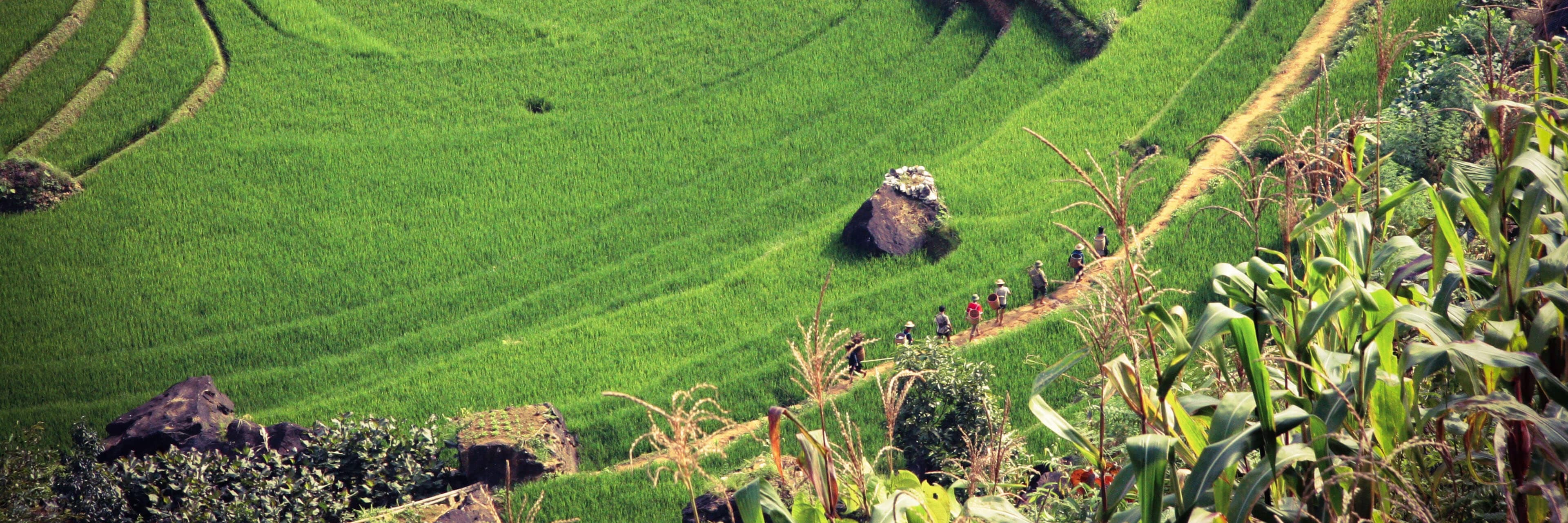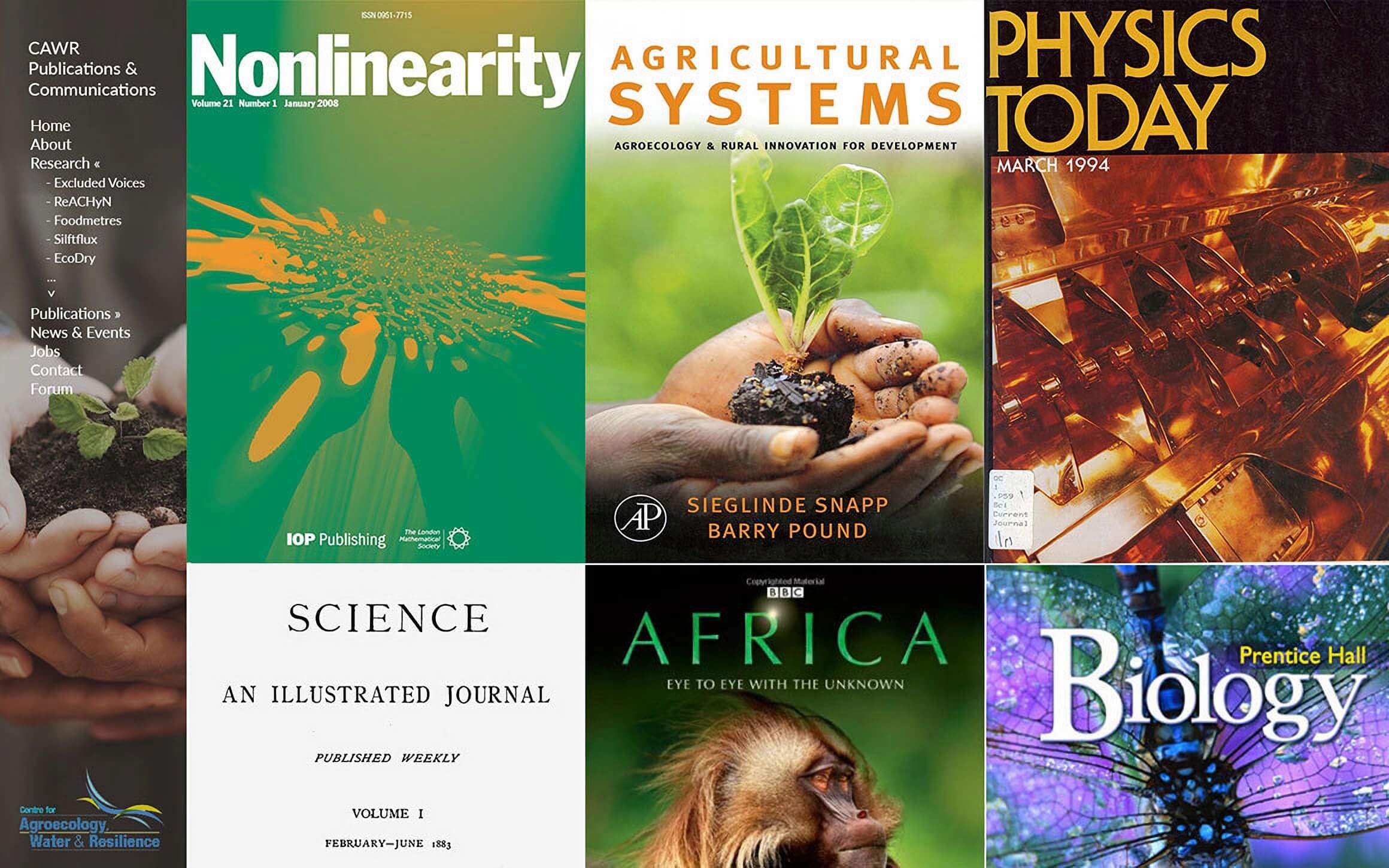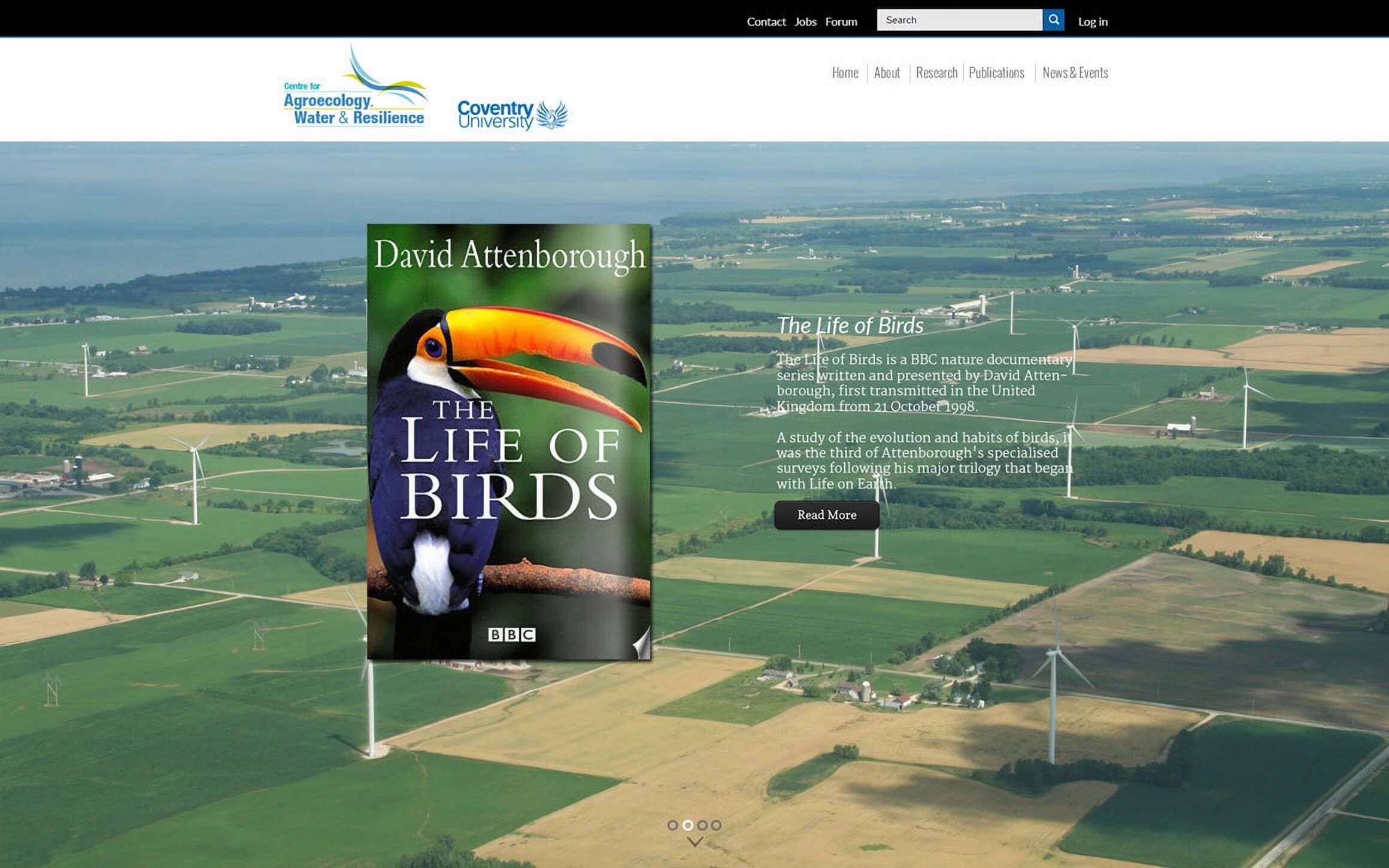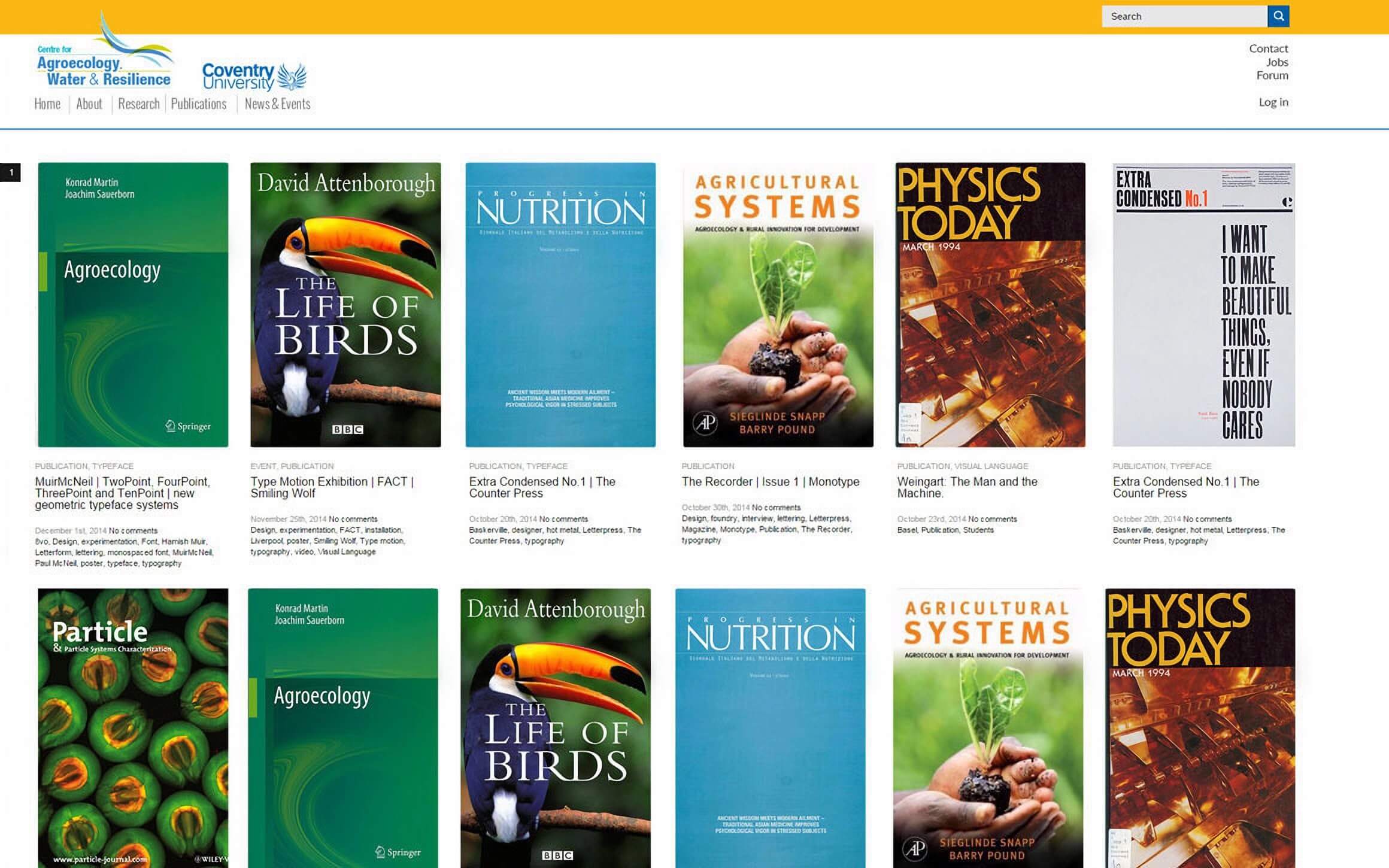CAWR
Centre for Agroecology, Water and Resilience
Clear, user-friendly and informative
Part of Coventry University, the Centre for Agroecology, Water and Resilience conducts research aimed at developing more resilient food and water systems throughout the world. In order to counteract climate and environmental change, loss of biodiversity, natural and man-made disasters and other destabilising factors, CAWR is continually seeking to expand its international team of researchers, becoming the largest centre in the world to do trans-disciplinary research on the links between agroecology and sustainable food systems, water management, and community and socio-ecological resilience. I was approached by the Executive Director, Dr. Michel Pimbert, to design CAWR's Communication and Publications web platform, emphasising in particular their internal working paper series, videos and animations, books and other multimedia publications. For an introduction to CAWR's work, please see the official brochure.

Agroecology in a nutshell
Agroecology is a farming approach that works with nature to create healthy and sustainable food systems. It avoids chemicals like pesticides and synthetic fertilizers. Instead, it uses natural methods like planting different crops together, rotating crops, and using compost to improve the soil. This includes planting different crops together, rotating crops each season, and using natural compost to improve soil health. The idea is to see farms as living ecosystems where plants, animals, and people work together to maintain balance. Agroecology also supports food sovereignty, meaning that farmers and local communities have more control over their food and resources. It promotes fair food distribution and helps small farmers protect their land. Overall, agroecology is a way to tackle big challenges like climate change and hunger while creating a more sustainable future.

Planning and research
Taking one step at a time
It would be a lie to say that I wasn't the least bit nervous - CAWR was set to become the largest, most important project I had ever worked on. Most of my fears, however, dissipated upon meeting Michel for the second time so that we could discuss the project a bit more in depth. From the little amount of information I was given, I managed to gather a number of stylistic references, as well as prepare a list of tens and tens of points that we needed to touch on: what is the purpose of the site, is there an existing website I could take a look at, are there any brand guidelines or specific features that I would need to integrate, etc. By the end of the project, we found the whole concept to have grown considerably: where before stood only a few rough ideas revolving around multimedia publications, now the website featured a book carousel showcasing CAWR's latest publications, a working papers browser with its own advanced search functionality, a fully customised video player and last, but not least, a geolocated interactive gallery used by researchers around the world to upload photographs taken at various hotspots and share them on the front-page.




